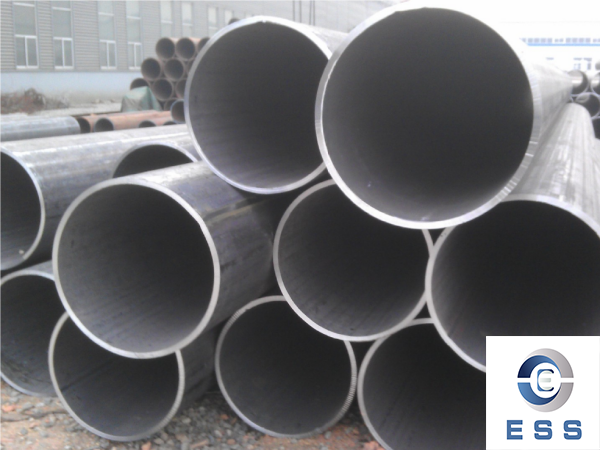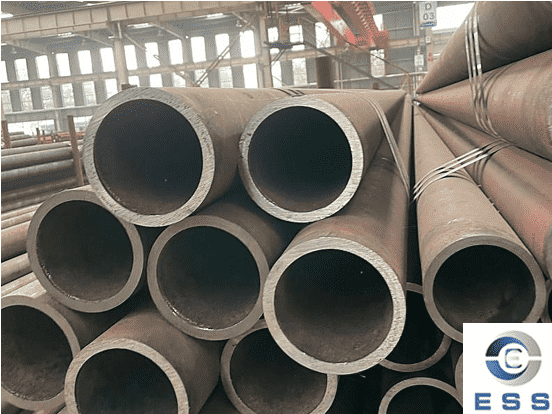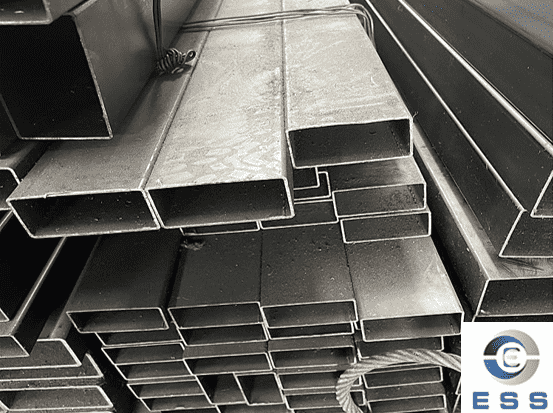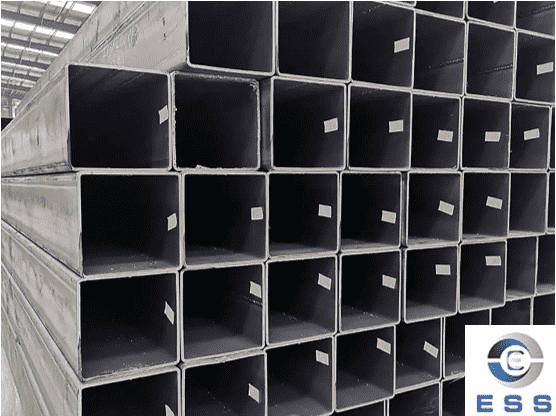The difference between steel pipe heat treatment methods
Heat treatment refers to a metal thermal processing process in which steel pipes (such as
seamless pipes and
welded pipes) change the chemical composition and structure of the surface or interior of the material by means of heating, heat preservation and cooling in a solid state to obtain the required properties. The heat treatment of steel pipe mainly includes quenching, annealing, tempering and normalizing. Among them, quenching and tempering are closely related, and they are often used together, and both are indispensable.

The difference between the four heat treatment definitions of steel pipes
1. Definition of Quenching
After austenitizing the steel, it is cooled at an appropriate cooling rate, so that the steel pipe undergoes martensite and other unstable structural transformations in the entire cross-section or within a certain range.
2. Definition of tempering
A heat treatment process in which the quenched steel pipe is heated to an appropriate temperature below the critical point AC1 for a certain period of time, and then cooled by a method that meets the requirements to obtain the required structure and properties
3. Definition of annealing
A steel pipe heat treatment process in which the steel pipe is slowly heated to a certain temperature, maintained for a sufficient time, and then cooled at an appropriate rate (usually slow cooling, sometimes controlled cooling).
4. Definition of normalizing
Normalizing is a heat treatment that improves the toughness of steel pipes. After the steel pipe is heated to 30-50°C above the Ac3 temperature, keep it warm for a period of time and take it out of the furnace for air cooling. The main feature is that the cooling rate is faster than annealing and lower than quenching
The difference between the four heat treatment purposes of steel pipes
1. The purpose of quenching
1) Improve the mechanical properties of steel pipes. For example: improving the hardness and wear resistance of steel pipes.
2) Improve the material properties or chemical properties of some special steels. Such as improving the corrosion resistance of stainless steel pipes, increasing the permanent magnetism of magnetic steel, etc.
2. The purpose of tempering
1) Reduce internal stress and reduce brittleness. Quenched parts have great stress and brittleness. If they are not tempered in time, they will often deform or even crack.
2) Adjust the mechanical properties of the steel pipe. After quenching, the steel pipe has high hardness and high brittleness. In order to meet the different performance requirements of various workpieces, it can be adjusted by tempering, hardness, strength, plasticity and toughness.
3) Stabilize the steel pipe size. The metallographic structure can be stabilized by tempering to ensure that no deformation will occur during future use.
4) Improve the cutting performance of some alloy steels.
3. The purpose of annealing
(1) Reduce hardness and improve machinability;
(2) Eliminate residual stress, stabilize dimensions, reduce deformation and crack tendency;
(3) Refine the grain, adjust the structure, and eliminate the defects of the structure.
(4) Uniform material structure and composition, improve material performance or prepare for subsequent heat treatment.
4.The purpose of normalizing
(1) Remove the internal stress of the steel pipe
(2) Adjust the hardness of the steel pipe (generally increase), and the plasticity is slightly reduced
Cooling is also an indispensable step in the heat treatment process. The cooling method is different due to different processes, mainly to control the cooling rate. General annealed speed of cooling is the slowest, normalizing speed of cooling is very fast, and quenching speed of cooling is faster. However, there are different requirements due to different steel types. For example, empty hard steel can be hardened at the same cooling rate as normalizing.
Tips
The four heat treatments of steel pipes evolve different heat treatment processes with different heating temperatures and cooling methods. In order to obtain a certain strength and toughness, the process of combining quenching and high temperature tempering is called quenching and tempering.
After some alloys are quenched to form a supersaturated solid solution, they are kept at room temperature or at a slightly higher temperature for a longer period of time to improve the hardness, strength or electrical properties of the alloy. Such heat treatment process is called aging treatment.
The method of combining pressure processing deformation and heat treatment effectively and closely, so that the workpiece can obtain good strength and toughness is called deformation heat treatment;
Heat treatment in negative pressure atmosphere or vacuum is called vacuum heat treatment. It can not only keep the workpiece from oxidation and decarburization, keep the surface of the workpiece after treatment clean, improve the performance of the workpiece, but also conduct chemical heat treatment through infiltration agent.













 Eastern Steel Manufacturing Co.,Ltd not only improve product production and sales services, but also provide additional value-added services. As long as you need, we can complete your specific needs together.
Eastern Steel Manufacturing Co.,Ltd not only improve product production and sales services, but also provide additional value-added services. As long as you need, we can complete your specific needs together.










